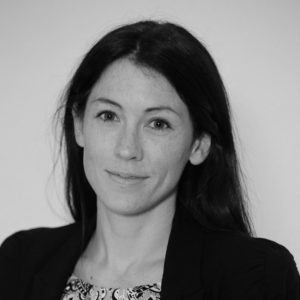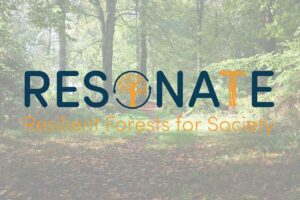Forestry is now a booming billion pound sector in the UK, yet it continues to face a lack of diversity in its workforce. Following Confor’s Diversity for Resilience workshop in Edinburgh, Julie Thomson, ICF Marketing and Communications Officer, reports on the issues raised and what, as a marketing professional, she can do to help.
I didn’t know what to expect when I signed up to take part in last week’s Diversity for Resilience Workshop, run by Confor in Edinburgh. It’s a big topic and meaningful outcomes would have to mean big ideas. I was pleasantly surprised to find myself in a room full of (mostly) women with plenty to offer.
Diversity and forestry are not things that have historically gone hand in hand, and this is particularly true when it comes to gender balance, the main focus of last week’s event. It’s been clear to me for a while that there is a huge opportunity currently being missed by the forestry sector. Currently only 12% of ICF’s membership is female. Meanwhile, UK women are now one third more likely to take up higher education than men (UCAS), and in 2015, women made up 56% of students in higher education (HESA). If the forestry sector is to continue to thrive, we need more graduates and everything is now pointing to this untapped female workforce.
Unfortunately most of the women at the workshop offered up some or other example of their isolation in the workplace. Despite working on the periphery of the sector I have not been excluded from such negative experiences, but some of the stories coming forward from this event reminded me that I am very sheltered from the true scope of the issue. One forest manager described being told by a male colleague that he would pick her up at the end of the village, and not her house, so that he wouldn’t be seen in his car with a woman that wasn’t his wife. Another described being told flat-out by colleagues that she wouldn’t be able to do her job because she was female. There was a lot of emphasis on resilience. Women need to be resilient to be in this industry and ‘that’s just how it is’. Despite the negative experiences shared, I couldn’t help but being inspired by the speakers at Confor’s event, both in their passion for their jobs and their personal strength. Jo O’Hara MICFor, Head of Forestry Commission Scotland, was particularly moving in her keynote speech about the challenges she faced on the road to achieving the country’s top forestry role. Her message was, it’s not about having it all, but about doing it all – and for women, not all at once.
These are examples of women that have not let perceived barriers stand in the way of their professional success, and in doing so have reached the top of their professional spheres. However, the first step of treating a problem is acknowledging there is one. Many speakers recognised that other women that had started with them on their professional journey had not continued on it. One shocking statistic delivered by Talat Yaqoob from Equate Scotland was that 73% of women who study STEM subjects do not go on to work in the industry.
Recruitment v Retention
So I find myself asking, as a marketer, what can I do to help? In the last year alone I have run a number of campaigns that have focused on attracting more women into forestry. #ILookLikeaForester encouraged women working in the sector to share images of themselves on social media, while ICF’s Forestry Careers in 60 Seconds video showcased a broad range of forestry careers, using some strong female role models. Between YouTube and some highly targeted Facebook advertising, this campaign has been viewed by over 45,000 young people across the UK.
For me, one of the key outcomes from yesterday’s event was retention of skilled employees. It’s all very well running campaigns to attract diverse young people into the sector, but what about keeping them? Marketers can take the horse to water but it’s the sector itself that must make it drink. More investment in targeted marketing activities much be matched by diversity training, and very much working with men rather than what may be perceived to be against them. In a room of about 20 delegates at the Diversity for Resilience event, only two were male. Perhaps they weren’t invited, but it would have been great to see more.
I think we must also be ready to acknowledge something difficult in an age of hyper-equality – that perhaps men and women are attracted by different roles in the sector, and this needs to be reflected by our marketing materials. Sally York of Forestry Commission Scotland, who has 20 years’ experience working in forestry education, spoke about the different language that we use to talk to girls and boys, with a females preferring softer, more emotive language. It pains me to talk about ‘softer’ roles in relation to women – especially when I think of some of the inspiring women I met at Confor’s event, working in all aspects of the forestry sector. But I would certainly talk about targeting women with management and scientific roles, which may be more attractive to them. The sector has so much to offer, and it’s time we show girls, and indeed all young people, that they have a place in it.
In the meantime, event organiser Dr Liz Barron-Majerik will compile a report of outcomes from last week’s meeting, and hopefully we can come up with some meaningful actions to keep the momentum up. I very much look forward to sharing this with ICF members.






